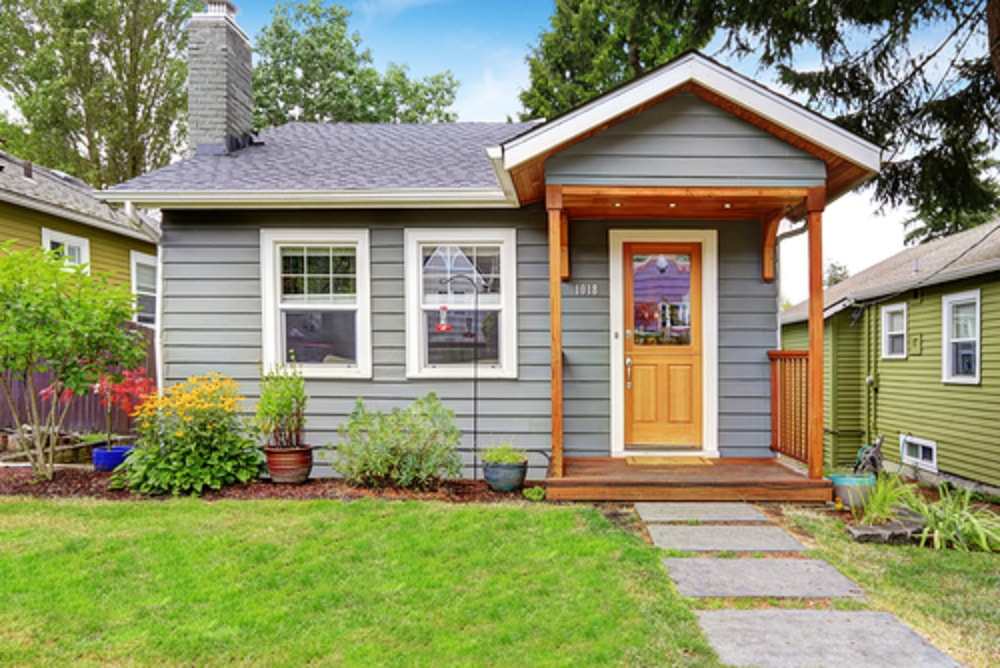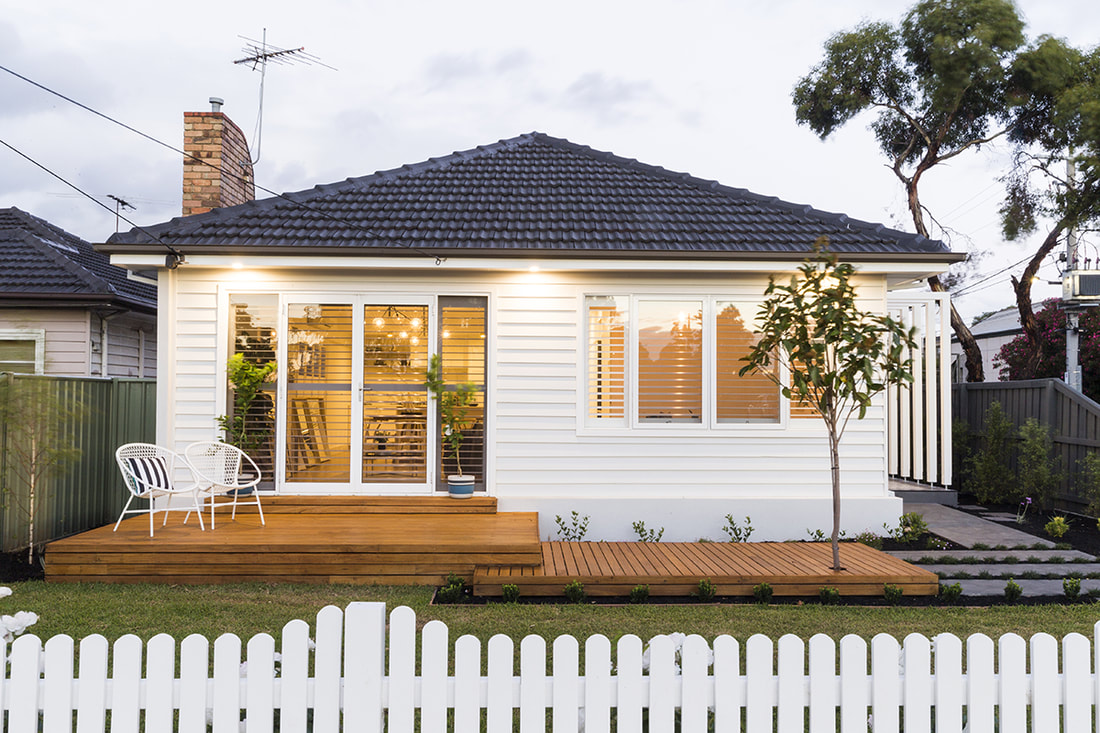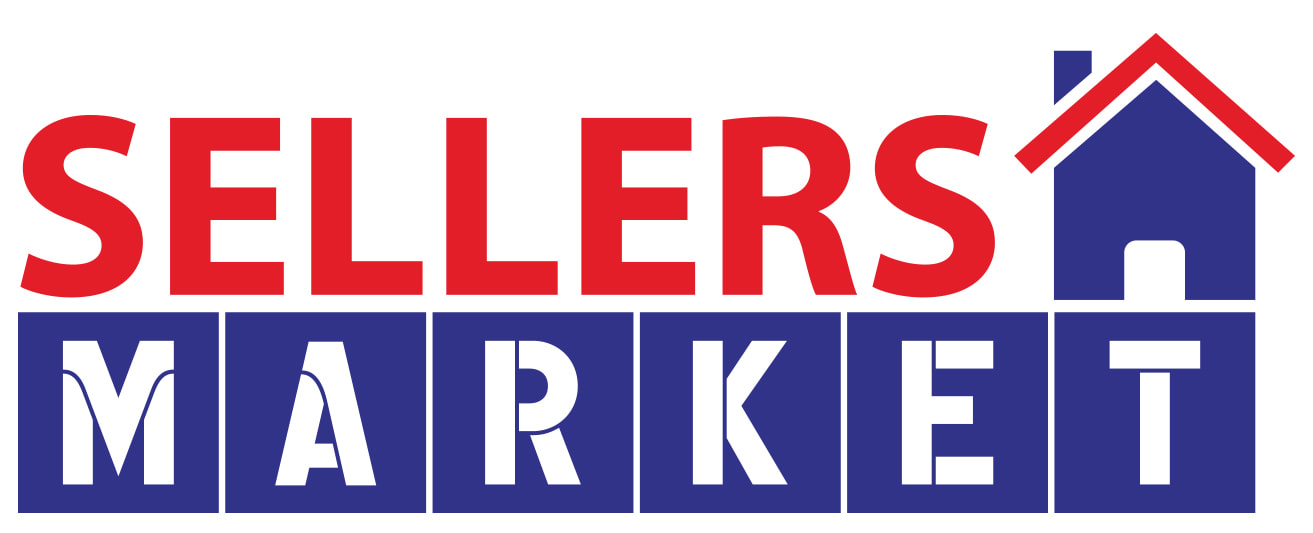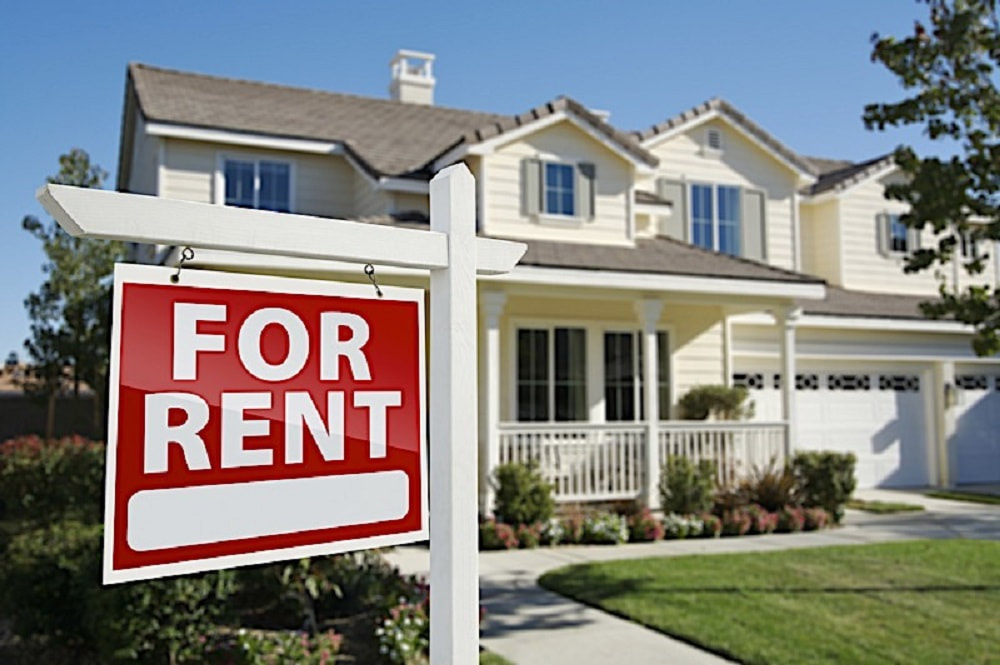Does your home offer any of the perks some buyers will pay more for?To understand how much your home is worth, you have to know what affects its value. The appraisal of a home value is an estimate tool for extrapolating the real market value of your home, based on existing home-related data and actual sales prices in your area. Thousands of data points correlate with home values and sale prices — some of which are obvious (like the condition of the home) and some that aren’t. Here are several surprising things that can affect either the existing value of your home or the price someone is willing to pay for it, all based on data. 1. Proximity to a Starbucks How far do you have to drive to get a Frappuccino? If the answer is “not that far,” you’re in luck. A 2015 Zillow report found that, between 1997 and 2014, homes within a quarter-mile of a Starbucks increased in value by 96 percent, on average, compared to 65 percent for all U.S. homes, based on a comparison of Zillow Home Value Indexdata with a database of Starbucks locations. To evaluate if this effect is isolated to Starbucks, the research team looked at another coffee hot spot (one with particular pull on the East Coast): Dunkin’ Donuts. The data showed that homes near Dunkin’ Donuts locations appreciated 80 percent, on average, during the same 17-year period — not quite as high as homes near a Starbucks, but still significantly above the 65 percent increase in value for all U.S. homes. 2. Blue kitchens and blue bathrooms Beyond America’s obsession with curb appeal, what’s inside your house counts a lot too — especially the colors you paint the rooms (particularly the kitchen). According to Zillow’s 2017 Paint Color Analysis, which examined more than 32,000 photos from sold homes around the country, homes with blue kitchens sold for a $1,809 premium, compared to similar homes with white kitchens. Blue is also a popular bathroom shade. The same analysis found that homes with pale blue to soft periwinkle-blue bathrooms sold for $5,440 more. Walls painted in cool neutrals, like blue or gray, can signal that the home is well cared for or has other desirable features. 3. Trendy features Joanna Gaines’ aesthetic is permeating more than just your YouTube search history. Zillow listings mentioning the shiplap queen’s favorite features — like barn doors and farmhouse sinks — sell faster and for a premium, according to a 2016 Zillow analysis of descriptions of more than 2 million homes sold nationwide. Listings with “barn door” in the description sold for 13.4 percent more than expected — and 57 days faster than comparable homes without the keyword. Meanwhile, listings touting “farmhouse sink” led to a nearly 8 percent sales premium. Sellers can use the listing descriptions to highlight trendy details and features that might not be noticeable in the photos. 4. How close you are to a city If you own a home in a major American metropolitan area, you’re most likely sitting on a significant (and rapidly appreciating) financial asset. Case in point: Home values in the New York, NY, metro area are worth $2.6 trillion, per a recent Zillow analysis. The average urban home is now worth 35 percent more than the average suburban home. Since 2012, the median home value in urban areas has increased by 54 percent, while the median home value in suburban areas is up just 38 percent. On Point Homevestments
0 Comments
Your parents' rite of passage may not make sense for youWhen the Baby Boomer generation was venturing into adulthood, it was common to buy a “starter home” — a modest, small dwelling. As their families grew and careers advanced, they moved into bigger or better homes. Now, many people struggle to come up with the down payment for a first home. They may wonder if it’s smarter to wait and save more money so they can buy a home that makes more long-term sense, or go the other route, buying a starter home and planning to stay in it for more years. It’s a personal, practical and financial decision, but here are some pros and cons of buying a starter home. Pro: Build stability quicker Lots of lessons come from homeownership. It exposes you to a new set of decisions and circumstances. One surprise benefit that strikes most people is the stability they feel when they become homeowners. They might feel more grounded, and a part of a larger community. After making a few cosmetic changes to make a home “theirs,” many new homeowners find they enjoy nesting at home, having friends over, and enjoying their own space. Con: Buying twice means moving twice Think you’ll be ready to upgrade in just a few years? It might be more cost-effective to save and stretch for the larger house, so you can stay in it longer. Although mortgage rates are low, there are costs associated with buying and selling a home: title insurance, inspections, brokerage commission, along with a handful of loan fees. Plus packing up and moving twice can be expensive and exhausting. Some prefer to pick one house for the long haul. While staying put and continuing to rent may seem wasteful in the short term, it might be a more strategic move. Pro: Build equity sooner Although not the guarantee it was a generation ago, odds are good that when you get into your first home, you can realize some equity. If you can commit to at least five to seven years, there’s a chance you can come out well ahead. By making improvements that add value, you can take the equity you’ve built and apply it as a down payment on the next home. In essence, the starter home might help you purchase your dream home. Con: You may spend more than you planned There are soft costs to home ownership. Property taxes and mortgage payments aren’t the only expenses to owning. You’ll need to furnish your new home, purchase window coverings, and pay for landscaping improvements. You’ll likely want to paint, refinish the floors, or change the carpet before moving in. And, you’ll surely make mistakes along the way by hiring the wrong contractor, making a poor landscaping decision, or mistakenly waiting to install the new AC condenser. Some parts of homeownership are trial and error. It adds up. You might be better off avoiding those expenses by renting and saving for your long-term home. Pro: Start realizing the tax benefits When you own a home, the interest portion of your monthly mortgage payment can be written off, dollar for dollar against your income. If you spend $1,000 per month on mortgage interest, at the end of the year, you can deduct $12,000 off your taxes. When you pay rent, the money goes to your landlord, and that’s it. The sooner you own, in theory, the faster you can save some money — perhaps toward your next home. Con: Homeownership isn’t a sure thing The world moves at a faster pace today, and that affects home values. Just a generation ago, people stayed closer to home, got married earlier, stayed married forever, and kept the same job through retirement. Today, people choose to stay single longer, and may even purchase their starter home solo. Divorce rates are higher, the global economy moves people all over the world for work, and we prefer to stay more mobile. That means homeownership may not be part of the equation. What happens if you buy your starter home and then get a job transfer, divorce, or the opportunity of a lifetime to live abroad? You might be stuck being an accidental landlord or selling your home at a loss. It’s up to you If you play your cards right, you can get into the starter home sooner rather than later and make a smart financial decision. If you buy the right first house, are open to building sweat equity, and plan to hang out there for five to seven years, there’s a good chance that you’ll have made a smart move. This decision will enable you to get into a larger home, in a better neighborhood or school district, or maybe just your dream home. Homeownership is a personal choice, and there is no one path to take. Stick within your comfort zone, and always go with your gut On Point HomevestmentsHappy owners, happy tenants — it all starts with the right property manager.You would never turn your home over to a stranger, so choosing a property manager shouldn’t be any different — finding one you trust is vital. “You are entrusting probably one of the biggest investments you’ll make into the hands of someone else, so you want to make sure you feel confident that they’ll handle things the way you want them to,” says Grace Langham, CEO of Nest DC, an award-winning boutique property management firm in Washington, D.C. Dependability and trustworthiness are two key points all homeowners should keep in mind when assigning their home or condo to the loving care of a third party. But before handing over the keys, consider these six other factors to help you find the right property manager. Communication With so many players involved — owner, tenant, and manager — communication is critical. Some owners prefer lots of updates, while others want few. Regardless of your desired amount of communication, the quality of it is crucial. A property manager’s availability and response rate get to the very heart of their job. In your initial contact, look for clues about their speed, courtesy, and availability. “Once signed on, a good manager will do what it takes to keep you in the loop, whether you prefer emails, phone calls, or texts,” Langham says. Residents When it comes to renters, a property manager’s duty is twofold: Find quality residents, and ensure they are treated fairly. Happy renters often stay in a residence longer, and are more reasonable when things break. That said, finding good residents requires legwork. “Bad tenants can be one of the most costly things for an owner,” says Nathan Miller, president and founder of Rentec Direct, a property management software company. Evictions are expensive, especially when owners are forced to forgo several months’ rent, and damage can be costly. That’s why running a credit check and performing a background screening for criminal and eviction reports are musts, according to Miller. Fees Property management fees tend to be fairly standard, Miller says — usually between seven to 15 percent of a month’s rent, but most often around 10 percent. Sometimes, a condo may cost slightly less than a stand-alone house because there’s less home and yard to maintain. The owner is also on the hook for maintenance costs, and often pays a finder or leasing fee — up to a full month’s rent — when a new resident moves in Ask if you will still be charged, even if the unit stands empty. Some property managers also charge a lease renewal fee and sometimes tack on a project management fee when dealing with excessive bureaucracy or paperwork, such as insurance claims. Verify the fee structure and services provided before signing any contract. House visits and other specs When it comes to inspections, a property manager should be proactive. That means taking a peek at your property no less than once (and maybe even twice) a year to ensure that everything is in good shape. Such time-consuming tasks mean it’s important for a property manager to maintain a reasonable caseload. Miller says his ideal property manager oversees between 500 to 1,000 properties. “Once they get above that size and they’re managing many, many thousands of units, you’ll lose the personal touch,” he says. Finally, you want to find a property manager that specializes in a type of unit: single-family homes, apartment complexes, or high-end houses, for example. Earning potential To maximize a home’s earning potential, property managers should know how to deftly market a unit so that it doesn’t stay empty long. This includes everything from posting it on well-known rental websites to taking quality photos that make it pop. Miller says the property manager should also ensure a home is leased at market rent, and analyze that rate semiannually. You want to know you’re not being shorted income by charging too little. Technology Finally, the proper software can indicate that a management firm has what it takes to succeed. “We’re lucky to be a company that’s eight years old,” Langham says. “We started with all this technology that’s really friendly to the millennial generation, which is a lot of the renter base.” Collecting rent and submitting maintenance requests via an online interface makes interactions between all parties a breeze, meaning owners and tenants can move on with their busy lives. After all, at the end of the day, that’s what having a property manager is all about. On Point HomevestmentsFind out if teaming up to buy a second home is right for you and your palsGiven the current strength of the dollar abroad and the fast-moving real estate market at home, you may be thinking about buying a second home at your family’s tried-and-true vacation spot, on a sunny beach, or near your favorite ski destination. But what can your budget realistically get you? If what your vacation-home fund allows is more fixer-upper than dream home, going in on a purchase with friends or family could be a great way to get much more home for your money. If you’re considering going this route, here’s how to get started. 1. Decide if it’s right for you “The number-one reason to consider buying a house with friends is that it lowers your investment amount,” advises Bryant McClain, director of sales and marketing at Itz’ana Resort & Residences. “Unlike timeshares or fractional ownership opportunities, when people go in together and buy a property at market price, they enjoy the equity gains of the traditional real estate market.” McClain also points out that the best candidates for shared property are those who want to use the home a few weeks a year, then rent out the home the rest of the time. (Just be sure you’re correctly set up to do so.) Owners also have to be comfortable sharing ongoing expenses, like property management fees, utilities, insurance, and repairs. 2. Lay the legal groundwork To protect all owners when the unexpected happens, and to avoid hurt feelings and strained friendships, McClain recommends hiring an attorney to set up an LLC, then purchasing the home through that company. “Owning a property with friends or family is all fun and exciting on the front end, but what happens three years later when somebody wants out?” says Bryant. Your attorney can draft an operating agreement that clears up expectations on everything from how utilities are shared to how a buyout would work if one owner wanted to sell and the others didn’t. 3. Start searching Keep in mind that the vacation-home market moves quickly, and with multiple stakeholders needing to agree that a property is the one, it’s best to decide on your shared criteria before you start looking. This is especially important if you’re searching from afar or if one person will be doing most of the home touring on behalf of the group. That way, when you find the right home, you can put an offer together quickly. “Treat the whole transaction like a business,” suggests Bryant. “Make a spreadsheet with potential homes, list pros and cons, and ask everyone to vote — that’s where having an odd number of owners comes in handy.” You should also enlist a local real estate professional with expertise in the destination where you’d like to buy. That person is best qualified to help you identify homes that are a good value, that will perform well in the local vacation rental market, and that are in locations likely to appreciate. There’s plenty of legwork between “Hey, maybe we should buy a home together” and signing on the dotted line, but if you find the right people to partner with, approach it like a business transaction, and act quickly when you find the perfect home, you’ll be sitting back and enjoying your dream home before you know it. On Point HomevestmentsSave some room in your budget for expenses after move-inBy the time you get the keys to your new construction home, you might feel stretched thin in the finance department. From earnest money and design center upgrades, to closing costs and moving expenses, buying a brand-new home is never cheap. As you take a look at the costs on the horizon, it’s wise to look a little past your closing date. There are a few post-closing costs that are unique to brand-new homes and some that are familiar to all new homeowners. Set aside a little money for these expenses now, and it’ll be smooth sailing once the “sold” sign is out front. Appliances Unless you’ve negotiated a washer and dryer into the price of the home with your builder, your new laundry room will likely be a big empty space when you move in — no washer and dryer to be found. Many builders don’t include a refrigerator either, opting instead to let homeowners choose a style that suits their needs. Here’s a tip to ease your wallet woes: Start shopping appliance sales once you know your approximate close date. Many appliance stores will let you purchase ahead of time to take advantage of a good price, then delay your delivery until you move in. Utilities If you’re upgrading to a larger home, your utilities will likely increase, especially heating and cooling. And if you’re moving to a new city or a location with a different utility company, you may have to pay a deposit to start service. If you’re interested in services like cable, satellite TV, or Internet, you may have to install some equipment that would already be installed if you were buying a pre-owned home. Window coverings Look at all those big, beautiful windows in your new home! And then notice that they’re bare — no blinds or curtains in sight. Most new homes do not come with window coverings, and they’re definitely something you’ll want to quickly look into when you move in. There are better ways to introduce yourselves to the neighborhood than through wide-open windows — or bed sheets pinned up for privacy. Furniture There’s nothing more exciting than picking up some great new furnishings and decor for a brand-new space. You may have pieces that worked well in your old space but don’t fit your new home’s layout. Or maybe you have a new guestroom to furnish, a deck that is begging for patio furniture, or beautiful hardwood floors that need area rugs. Set aside some money now so you can start decorating right after move-in day. Landscaping Did you know that some builders only landscape the front yard, leaving the backyard unfinished and unfenced? And, if your new neighborhood has a homeowner’s association, the rules may require you to finish your yard within a certain time period. That means you foot the bill for landscaping your new home’s yard, and whether you do it yourself or hire a professional, it’s still an expense you shouldn’t overlook. Setting foot in your brand-new, just-finished home is an exhilarating experience, and something you won’t soon forget. With just a little planning and saving in advance, you can spend more time making your new house a home, and less time stressing over how you’re going to pay for it all. On Point HomevestmentsDoes your home offer any of the perks some buyers will pay more for?To understand how much your home is worth, you have to know what affects its value. The Zestimate home value is Zillow’s tool for extrapolating the real market value of your home, based on existing home-related data and actual sales prices in your area. Thousands of data points correlate with home values and sale prices — some of which are obvious (like the condition of the home) and some that aren’t. Here are several surprising things that can affect either the existing value of your home or the price someone is willing to pay for it, all based on data. 1. Proximity to a Starbucks How far do you have to drive to get a Frappuccino? If the answer is “not that far,” you’re in luck. A 2015 Zillow report found that, between 1997 and 2014, homes within a quarter-mile of a Starbucks increased in value by 96 percent, on average, compared to 65 percent for all U.S. homes, based on a comparison of Zillow Home Value Index data with a database of Starbucks locations. To evaluate if this effect is isolated to Starbucks, the research team looked at another coffee hot spot (one with particular pull on the East Coast): Dunkin’ Donuts. The data showed that homes near Dunkin’ Donuts locations appreciated 80 percent, on average, during the same 17-year period — not quite as high as homes near a Starbucks, but still significantly above the 65 percent increase in value for all U.S. homes. 2. Blue kitchens and blue bathrooms Beyond America’s obsession with curb appeal, what’s inside your house counts a lot too — especially the colors you paint the rooms (particularly the kitchen). According to Zillow’s 2017 Paint Color Analysis, which examined more than 32,000 photos from sold homes around the country, homes with blue kitchens sold for a $1,809 premium, compared to similar homes with white kitchens. Blue is also a popular bathroom shade. The same analysis found that homes with pale blue to soft periwinkle-blue bathrooms sold for $5,440 more. Walls painted in cool neutrals, like blue or gray, can signal that the home is well cared for or has other desirable features. 3. Trendy features Joanna Gaines’ aesthetic is permeating more than just your YouTube search history. Zillow listings mentioning the shiplap queen’s favorite features — like barn doors and farmhouse sinks — sell faster and for a premium, according to a 2016 Zillow analysis of descriptions of more than 2 million homes sold nationwide. Listings with “barn door” in the description sold for 13.4 percent more than expected — and 57 days faster than comparable homes without the keyword. Meanwhile, listings touting “farmhouse sink” led to a nearly 8 percent sales premium. Sellers can use the listing descriptions to highlight trendy details and features that might not be noticeable in the photos. 4. How close you are to a city If you own a home in a major American metropolitan area, you’re most likely sitting on a significant (and rapidly appreciating) financial asset. Case in point: Home values in the New York, NY, metro area are worth $2.6 trillion, per a recent analysis. The average urban home is now worth 35 percent more than the average suburban home. Since 2012, the median home value in urban areas has increased by 54 percent, while the median home value in suburban areas is up just 38 percent. On Point HomevestmentsThe last thing potential buyers want to hear is that we are currently in the midst of a seller’s market. However, we'd argue that there’s no cause for concern. There is absolutely a viable exit strategy in any market, regardless of whether or not it favors homeowners. The key is to maintain a level head and analyze the data in front of you. If for nothing else, it’s entirely possible to run a lucrative real estate investing career in a market that appears to favor only sellers; you just need to know how to work with what you are given. Seller’s Market Definition A seller’s market is the direct result of economic indicators that benefit homeowners more than the buyers they intend to work with. In its simplest form, however, a seller’s market is exactly what it sounds like: a real estate market whose scales are tipped in favor of those who currently own property. Perhaps even more specifically, a seller’s market is nothing less than a best case scenario for homeowners, which begs the question: Outside of the actual condition of a marketplace, what are the specific characteristics of a seller’s market? What factors actually give the edge to homeowners? Better yet, what’s it all mean for the whole of the real estate landscape? The vast majority of people understand the concept of a seller’s market (it’s relatively simple), but fewer have an intimate knowledge of why a particular market would benefit sellers over buyers. Fortunately, the fundamental concept behind a seller’s market isn’t all that difficult to grasp either; it can be broken down into one important principle: supply and demand. If for nothing else, a seller’s market is “a market condition characterized by a shortage of goods available for sale, resulting in pricing power for the seller. A seller’s market is a term commonly applied to the property market when low supply meets high demand,” according to Investopedia. When demand meets a shortage of inventory, the homes that are available for sale become inherently more valuable. In other words, when more buyers are competing over fewer properties, it’s likely that the homeowners are at a distinct advantage. The competition simultaneously allows owners to increase asking prices without risking the loss of interest. Therefore, it’s safe to assume a seller’s market coincides with everything buyers would rather avoid: higher prices, more competition and a much faster pace. The Differences Between A Buyer’s And Seller’s Market Anytime supply can’t keep up with demand, sellers will reap the rewards, inevitably resulting in a seller’s market. The more inventory levels are depleted, the more buyers will be willing to pay when they find a house that meets their criteria. Consequently, a buyer’s market occurs when there are more than enough homes to satiate demand. The ratio of buyers to available inventory will actually work in favor of buyers in a buyer’s market. When inventory levels are comparatively high to the amount of people looking to purchase a house, history suggests sellers will compete over shoppers that are awarded several options. Therein lies the single most important differences between a buyer’s and seller’s market: supply and demand. It is worth noting, however, that the housing market is nothing, if not self-aware. The same pendulum that can swing in favor of sellers will eventually course correct to offset the resulting imbalance and, in turn, over-correct to the point in which a buyer’s market is eventually realized. The housing market is, after all cyclical. Each seller’s market will eventually be replaced by a buyer’s market (and vice versa), with the middle ground representing the balance a healthy market covets. As a real estate investor, you would be wise to remember that. For every buyer’s market, there is a sellers market; for every seller’s market, there’s a buyer’s market. The two have become synonymous with each other, and those that can tell the differences between the two stand to gain an edge over the competition. Are We Currently In A Buyer’s Or Seller’s Market? We are currently in the midst of a seller’s market, but I digress. The fundamental indicators supporting today’s housing market are anything but normal. It is true: everything suggests 2018 is a seller’s market. Inventory levels can’t keep up with demand. As a result, we have seen home prices increase almost exponentially. It is important to note, however, that we haven’t seen as many homeowners participate in the market as we would like. Despite being a seller’s market, owners don’t appear ready to sell for one simple reason: the moment they sell, they will be forced to join the ranks of buyers competing over the little inventory that has made itself available. As it turns out, most homeowners are content living with their equity for the time being. It is, therefore, safe to assume we will continue to see a seller’s market until more inventory makes its way to the market. Tips For Buying In A Seller’s Market We maintain there is no market that can’t be taken advantage of by savvy real estate investors. More importantly, there’s an exit strategy for just about every scenario, no matter how expensive or cheap the market finds itself. That said, there’s no reason to be discouraged by a seller’s market if you are looking to acquire your next deal, but rather invigorated. Take solace in the fact that it is still possible to invest in a seller’s market if you exercise the right exit strategies. Due, in large part, to the absence of significant profit margins in a seller’s market, markets like the one we are seeing today tend to favor long-term strategies. Of course, it’s entirely possible to find a deal to rehab and flip in a matter of months, but the data suggests now may be a good time to look at acquiring rental properties. Rental property acquisitions won’t come with a smaller price tag, but they will award investors the opportunity to offset the higher costs with a few years of rental income. In other words, it could potentially pay off to buy a rental property in a seller’s market. You will certainly pay more upfront, but the passive income potential could easily make up for the initial cost. In some cases, it may only take a few years to make up for the added costs. At that point, investors may choose to continue collecting rental income or, if the market is right and the numbers work, rehab the property and sell it at a later date. The returns may not be immediate, but the idea of buying a rental property could pay off in the long run. Now, as for the process of buying a property in a seller’s market, there are a few things that could ease the high acquisition costs:
Selling A House? Here’s How To Thrive In A Seller’s Market Despite a seller’s market inherently favoring homeowners, there’s still a few things you can do to maximize your profits, not the least of which include:
We are currently in the midst of a seller’s market, but the doesn’t mean homeowners can sit back and rest on their laurels. Complacency could significantly reduce your opportunity to maximize profits. Instead, take the time to learn the ins-and-outs of a seller’s market, and what it takes to work in one. Only those comfortable working in any condition will find success easier to come by. Key Takeaways
On Point HomevestmentsReal estate exit strategies have become synonymous with some of the most popular wealth-building vehicles used by today’s greatest entrepreneurs. Not only are they entirely capable of awarding savvy individuals with an impressive return on their investment, but you could argue that few other investing platforms offer a more diverse set of complimentary choices. Wholesaling, rehabbing and passive income opportunities are just the beginning; which one will you choose to pursue? The answer may be easier to come up with than you think. No other industry, as far as I am concerned, offers investors more ways to invest their capital than real estate, but I digress. The same freedom of choice most covet is not without its own caveat: with more choices comes more responsibility. With the entire real estate investing world at your fingertips, it’s easy to get in over your head. That’s why I recommend tailoring your real estate exit strategy to compliment your current level of experience. Not everyone is capable of successfully navigating all of the real estate exit strategies simultaneously, nor should they be expected to. And while there are those who can manage a rehab with one hand tied behind their back while simultaneously assigning multiple wholesale contracts, it’s not reasonable to expect a new investor to be able to do the same. The key is to know your own limitations and identify the exit strategy you are most comfortable with. Truth be told, there is a time and place to initiate a real estate exit strategy, and it’s not uncommon for your personal experience to dictate which real estate exit strategy you should execute next, or even first. And while experienced investors are free to choose whichever strategy meets their needs, those new to the industry should follow what I like to call the path of least resistance. There is a specific order I would recommend investors follow when exercising their freedom to invest in real estate exit strategies. I want to make it abundantly clear: the order in which you invest in real estate exit strategies isn’t set in stone. It’s entirely possible for a new investor to invest in a buy and hold property or a rehab as part of their first deal. It’s worth noting, however, that the growth of an investor is made easier by following a specific path; the one of least resistance I set out for you here. There is an inherent advantage of moving from wholesales to rehabs to rentals. The skills you learn in each strategy compound in the next, and are ultimately invaluable to your success as an investor. Real Estate Exit Strategies: Where Should You Begin?Whether you realize it or not, there is an order in which investors should get their feet wet in the world of real estate investing. And while what I am about to tell you is in no way written in stone, I am convinced that there is an order in which real estate investors need to commit to individual exit strategies: wholesales, rehabs and rentals. If for nothing else, undertaking real exit strategies in this exact order offers the smoothest transition from one strategy to the next. Wholesaling, for what it’s worth, represents the “easiest” gateway into the real estate investing world. Not only is it less of an undertaking than it’s rental and rehabbing counterparts, but wholesaling generally coincides with significantly less risk. As a wholesaler, your main priority is to go into contract with a respective seller, market the home to potential buyers, and assign your control of the contact over to the end buyer. More often than not, wholesalers never even need to assume ownership of the physical property; just the rights to purchase it. Once the seller has signed a contract saying you own the rights to buy the home, you can then turn around and sell your purchase rights to an interested buyer (usually a rehabber) for a minimal fee. Alternatively, wholesalers can also close on the property and immediately resell it to another investor in the form of a “double close.” It’s worth noting that certain regions have different laws regarding wholesaling, so be sure to check with the home’s local municipality before moving forward with a wholesale deal. As perhaps the most popular real estate exit strategy, rehabbing has become ubiquitous with the largest profit margins. And as the name suggests, rehabbing will have an investor buy a home, renovate said home and sell it for more than the initial investment (including repairs). The idea is to acquire a property for less than the market dictates and apply the necessary renovations that will make it comparable to similar homes on the market. It’s entirely possible, with the right improvements, to increase the property’s value beyond that of what you have already paid. Not surprisingly, rehabs coincide with considerably more work than traditional wholesales. As a result, rehabs expose investors to more risk and cost a lot more money. Having said that, rehabs are capable of making investors a lot more money on the back end of a deal. And with the right measures put in place, it’s entirely possible to mitigate risk. It’s also worth noting that the experience you gain from a wholesale can transition over into a rehab, and actually contribute to your efforts in a meaningful way. While some investors have found their niche in today’s wholesaling and rehabbing markets, there is a good chance they will want to graduate to our final stop on the path of least resistance: passive income. Otherwise known as a buy and hold strategy, passive income is essentially the result of a well-devised rental portfolio. And since the price of admission will have investors buy and hold on to a mortgage, this particular strategy requires more money up front. That said, most investors use rehabs as a stepping stone until they can finally transition to passive income properties. Buy and hold real estate exit strategies will have investors buy a property, and perhaps even conduct a few renovations. However, instead of selling the home, the idea is to rent it out. More often than not, investors will use this strategy when home prices are high to recoup any capital they expended acquiring the property. This is also a popular real estate exit strategy for those looking to build up equity in an asset. With property in hand, its entirely possible for any tenants you find to pay down the mortgage, making this a great strategy for those looking to not pick up a hammer. RESIDENTIAL REDEVELOPMENT COMPANY |
Details
Archives
February 2019
Categories
All
|
Company |
Services |
|
Possibilities

















 RSS Feed
RSS Feed